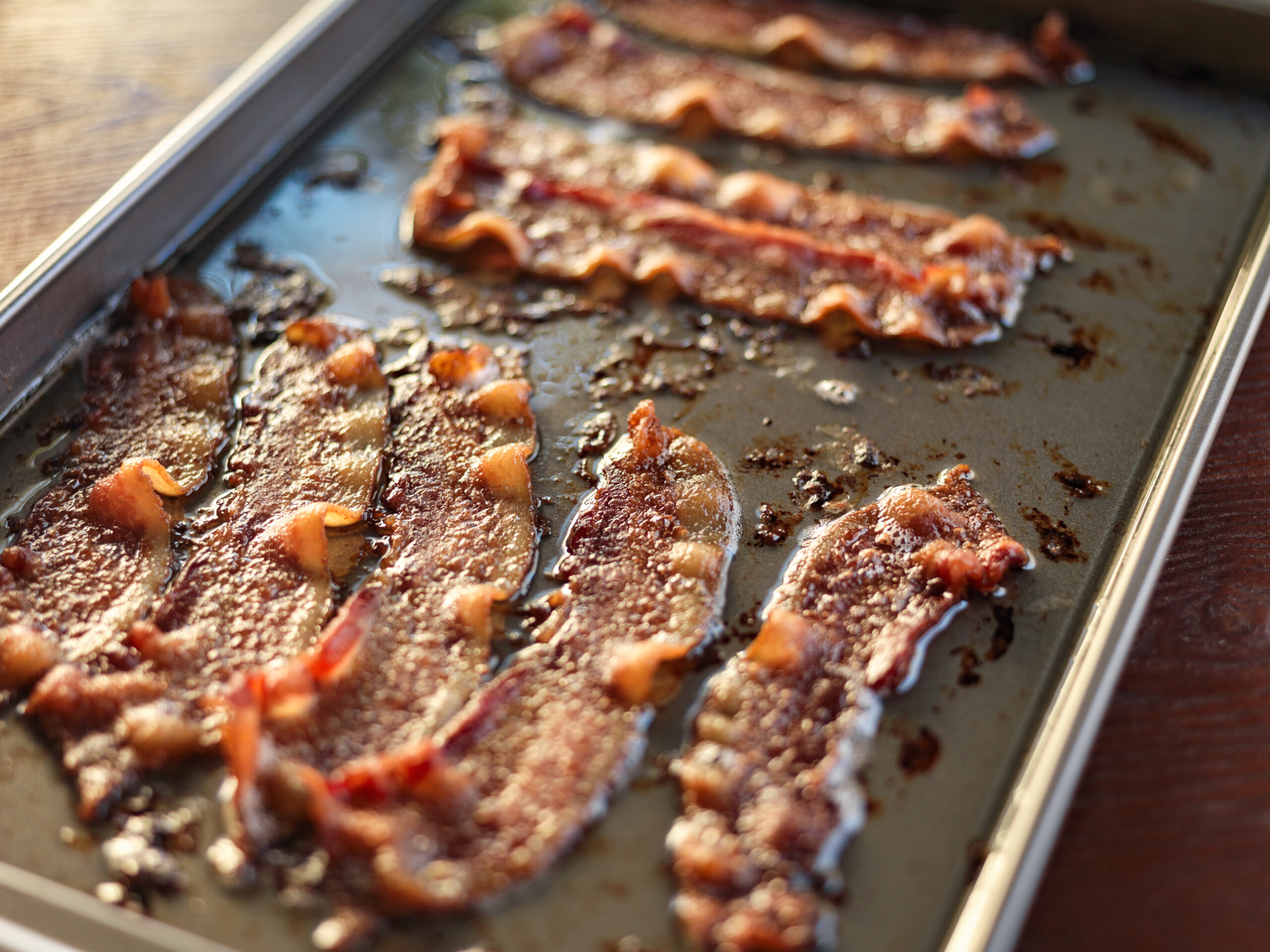CAFC Reverses Delaware Court on Question of Joint Inventorship
“We find that Howard’s alleged contribution of pre-heating meat pieces using an infrared oven is ‘insignificant in quality’… to the claimed invention.” – CAFC
The U.S. Court of Appeals for the Federal Circuit (CAFC), in a precedential decision, today reversed a district court holding that an inventor should be added as a joint inventor for his contributions to a patent for methods of pre-cooking bacon and meat pieces. The CAFC said the inventor’s contribution did not satisfy the three-part test articulated in Pannu v. Iolab Corp. because the contribution was “insignificant in quality.”
U.S. Patent No. 9,980,498 is owned by Hormel Foods Corp. and titled “Hybrid Bacon Cooking System.” In 2007, as part of a project to improve its microwave cooking processes for pre-cooked bacon, Hormel met with David Howard of Unitherm Food Systems, Inc. Howard and another Unitherm representative entered into a joint development agreement with Hormel to develop an oven that would be used in a two-step cooking process. Howard alleged that he disclosed the infrared preheating concept in claim 5 of the patent during the subsequent testing phase, but the patent ultimately issued in 2018 with four named inventors and did not include Howard.
The U.S. District Court for the District of Delaware determined that Howard was not the sole inventor, but that he was a joint inventor based on the contribution of the infrared preheating in claim 5. The court said the contribution was significant because of the differences between independent claim 1 and independent claim 5 and that Unitherm (now HIP) had shown that Howard’s testimony was corroborated by his colleague’s testimony, “by the pork loin testing data, and by testimony from three Hormel inventors stating that they had not conceived of the preheating with an infrared oven limitation.”
Pannu Test
Under the Pannu test, an inventor must have: “(1) contributed in some significant manner to the conception of the invention; (2) made a contribution to the claimed invention that is not insignificant in quality, when that contribution is measured against the dimension of the full invention; and (3) [done] more than merely explain to the real inventors well-known concepts and/or the current state of the art.” Hormel argued that Howard’s contribution was well known and part of the state of the art, particularly, U.S. Patent App. Pub. 2004/0131738 (“Holm”). Hormel said the district court failed to consider Holm and its disclosure, but HIP argued that the reference was “obscure” and never commercialized.”
The CAFC ultimately agreed with Hormel, explaining that the contribution did not meet the standard set forth in Pannu, and noting that “we find that Howard’s alleged contribution of pre-heating meat pieces using an infrared oven is ‘insignificant in quality’… to the claimed invention”:
“Howard’s alleged contribution, preheating with an infrared oven, is mentioned only once in the ’498 patent specification as an alternative heating method to a microwave oven. ’498 patent, col. 5 ll. 40–42 (“Preheating the sliced bacon with a microwave oven, or other suitable heating methods such as infrared or hot air, prior to fully cooking the sliced bacon . . . .”). Further, the alleged contribution is recited only once in a single claim of the ’498 patent, in a Markush group reciting a microwave oven, an infrared oven, and hot air. Id. col. 9 ll. 57–62. In fact, independent claims 1 and 13 only recite a method of making precooked bacon pieces (claim 1) or meat pieces (claim 13) using a hybrid cooking system comprising preheating meat pieces with a microwave oven and do not recite preheating with an infrared oven.”
Conversely, heating with a microwave oven is mentioned throughout the patent and specification, said the CAFC, and “not one example describes preheating with an infrared oven.” Thus, the quality of the contribution is insignificant when compared to the full invention.
The court did not need to reach the other Pannu factors since the failure to meet one is dispositive on the question of inventorship, said the CAFC.
Image Source: Deposit Photos
Image ID: 86858798
Author: resnick_joshua1
Eileen McDermott
Eileen McDermott is the Editor-in-Chief of IPWatchdog.com. Eileen is a veteran IP and legal journalist, and no stranger to the intellectual property world, having held editorial and managerial positions at […see more]







